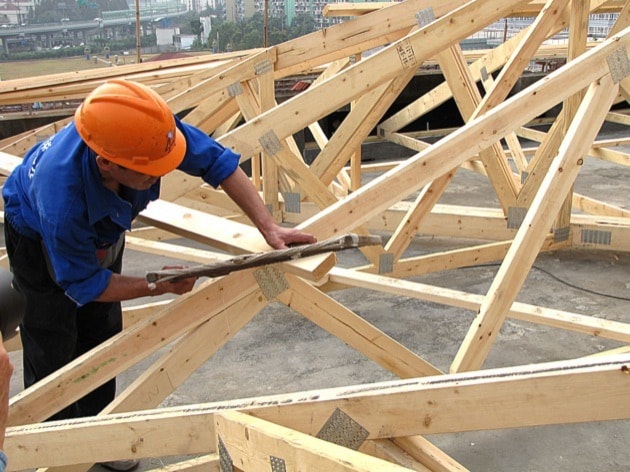One of a series of articles on the future of the B.C. forest industry. For more stories see index below or search for the hashtag on Facebook or Twitter.
SHANGHAI – Six years ago, B.C. forest companies were selling large volumes of lumber to Chinese builders for concrete forms or earthquake-resistant roof trusses assembled onsite using hand tools.
After the U.S. housing market collapse of 2008, rapidly urbanizing China briefly passed the U.S. as B.C.'s biggest lumber customer. Western-style suburban homes began to catch on with an expanding middle class.
Now, as the U.S. lumber lobby presses for import duties on Canadian lumber for a fourth time, China has changed course again. A mass movement from rural areas to cities has pushed urban sprawl and choking air pollution to the top of the government's worry list.
That's a threat and an opportunity for B.C. forest companies, executives were told as their annual trade mission began its China visit with a wood conference in Shanghai. The Chinese government no longer wants suburban villas on scarce farmland, and has directed cities to adopt prefabricated building systems, whether they be concrete and steel or wood.

Derek Nighbor, CEO of the Forest Products Association of Canada, and Susan Yurkovich, president of B.C.'s Council of Forest Industries, attend conference on wood marketing in Shanghai, Nov. 30, 2016. Tom Fletcher photo
One opportunity is resort construction. Urban Chinese are looking to get away from polluted cities, and lakeside or mountain resorts are increasingly in demand.
On a China scale, that translates to four billion domestic vacation trips in 2015, twice as many as five years before. Pre-fabricated accommodations are needed, and wood is lighter and cleaner to manufacture and move than concrete and steel.
"We've seen years and years of urbanization here, and now people need an opportunity to remove themselves from an urban setting," said Susan Yurkovich, president of B.C.'s Council of Forest Industries. "Last year's trade mission we were in Beijing, with probably the worst air quality they've ever had."
For Derek Nighbor, CEO of the Forest Products Association of Canada, one important shift is the central government's order to cities to meet new pollution targets. That gives an edge to wood construction over concrete and steel.
And while the B.C. industry faces a squeeze from its largest customer, the U.S., European wood producers such as Finland are gaining market share in China while Canada's has been declining, the conference was told.

[]



